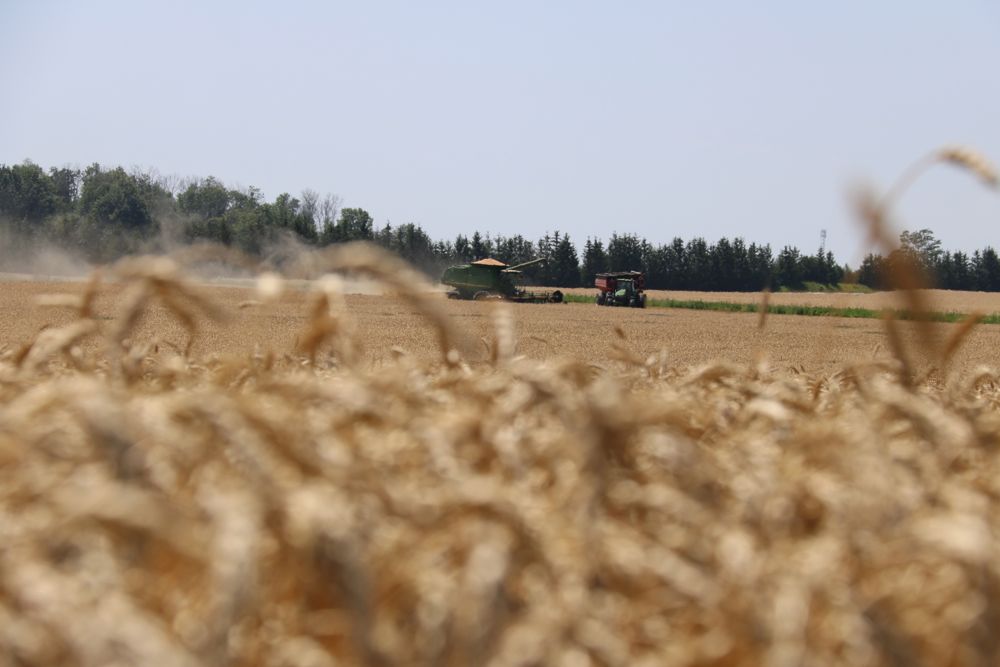Every farmer gets about 40 chances to get it right when it comes to planting their crops. The problem is, every year it’s like a whole new game. If you want proof, just look at 2011. Then ask yourself how much you’d like to bet on whether we’ll get that same weather this year, or something completely different.
Lesson #1: Adjust N based on spring weather
Cool and wet conditions in April, May and June resulted in lower-than-normal mineralization of nitrogen from soil organic matter, which was made worse by the loss of fertilizer N through denitrification. This was confirmed, Stewart says, when the Pre-Sidedress Nitrate Test (PSNT) Survey done June 10 to 15 showed soil nitrate levels were below average. Many fields needed more N than we would have estimated, he continues. While the N calculator is a good general tool, it can definitely pay to assess spring weather and soil nitrate levels to see if there is a need to top up your sidedress rates.
Read Also

Could crop sharing be a viable option for your farm?
Crop sharing could be a good option for young and beginning farmers.
Lesson #5 Watch out for western bean cutworm
Researchers are watching the western bean cutworm, a pest that is on the move and expanding its territory. There was significant damage from the pest in the Bothwell, Strathroy, Tillsonburg and Courtland areas, says Jocelyn Smith, expert in field crop pest management at the University of Guelph’s Ridgetown Campus. Moths were first spotted in Ontario in 2008. By 2011, they were confirmed all over Ontario — even as far north as Temiskaming and eastward into Quebec. However, damage from the feeding larvae thus far has been limited to the southwest.
Growers should be watching for the eggs. They’re laid on the upper side of the leaves near the top of the plant just before tasselling. These eggs will change colour from white through tan to purple within five to seven days. The best time to spray insecticide is when the eggs are purple and starting to hatch. After hatching the larvae will enter the tassel and within a week, will move down to the ears where they cause extensive feeding damage for the rest of the season. Smith adds that Western bean cutworm damage may also lead to increased ear mould. At the end of the season the larvae crawl down to the ground where they overwinter. Researchers can’t predict how extensive the problem will be in 2012 so growers are urged to be vigilant, particularly near the previous hot spots. Syngenta corn hybrids with the Viptera trait will give almost 100 per cent protection while SmartStax and Herculex corn, which contain the Cry1F protein are expected to provide 70 to 90 per cent protection. While selecting seed with resistance is the best option, says Smith, three insecticides — Matador, Corrigan and Decis — are registered for use. CG
Lesson #3: Watch K levels
Adding some potassium to the starter fertilizer will pay off for corn fields where soil test K values are less than 80 ppm, says Stewart. With high yields the past few years and high potash prices, many fields are now testing at less than 80 ppm soil K. That’s especially true of fields that aren’t getting manure.
“My data would suggest we need to be careful about how low we go with soil test potash,” Stewart says. He points to the first three years of a potassium starter trial which show a response to K in the starter even when 200 pounds of K was broadcast ahead of time.
Stay tuned for future results, but although the numbers were mixed for 2011, Stewart thinks corn planted on soils testing less than 80 ppm K will show an economic response to K in the starter even if K is broadcast.
Lesson #4: Hybrid selection pays off
Those last minute hybrid switches paid off. With the late planting conditions, growers who worked with seed reps and agronomists did a great job of adjusting to the challenge by selecting the proper hybrids not only for yield potential but also for performance in a stressed growing year, says Dave Den Boer, manager of product development and agronomy for Pride Seeds. “This resulted in a crop that came through better than expected,” Den Boer says.
Still, there was a surprise. Corn experts thought there would be little if any payback to high populations, given the late planting and high-stress conditions. Instead, 2011 was the fifth year of a Pride population trial, and the results showed another yield increase for hybrids that are adapted to higher pops. Says Den Boer: “We didn’t expect to see that in a dry year.”
Lesson #2: Seedbed prep pays off
In 2011, farmers were rewarded for doing a better job of seedbed preparation and a better job of planting. “This is one of the reasons we were pleasantly surprised by yield,” says Stewart, who says farmers should aim for a uniform seedbed. “A good set of harrows will ensure their planter performs better,” he says.
2011 reinforced the lesson that conditions at planting set the stage for the entire year, agrees Scott Fife, area agronomist with Pioneer Hi-Bred Limited for eastern Ontario and the Maritimes. Fields that were planted one or two days too soon had compaction a few inches below the soil surface, he says. With the dry conditions in June and July these fields suffered more moisture stress due to restricted root growth. “We saw more lodging and kernel abortion in these fields,” Fife says. Meanwhile, neighbouring fields that have been nurtured over time so they have superior soil structure paid their farmers back by growing through those stress periods and posting some remarkable yields.















